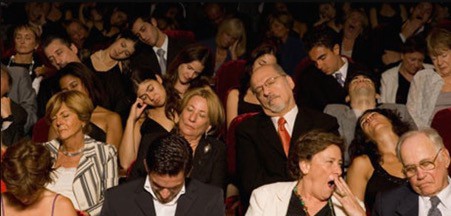3 WAYS TO IMPROVE NON-VERBAL COMMUNICATION SKILLS
Since the dawn of society, our ancestors have sought to find ways to interact; even before there was a structured language, both spoken and written, communication was done through symbols and gestures.
Tom and Jerry, the Pink Panther, if you watched these cartoons like me, you probably have a great memory of these animations. Even though these characters didn’t talk, you understood what was going on in the scene, and this is proof that non-verbal communication also transmits messages.
They were simple drawings, but at the same time very captivating. In addition, they had a detail that today would undoubtedly arouse the curiosity of many children: the characters did not speak a single word.
So, how about taking inspiration from these non-verbal communication references and perfecting the way you express yourself?
A survey conducted by UCLA (University of California, Los Angeles) revealed that 55% of communication occurs through our body language. The words we emit represent only 7% and, astonishingly, the tone of voice we use is responsible for 38%.
With this article, you will learn more about non-verbal communication, its different meanings, how they can be applied in multiple contexts, and its importance.
What is Non-verbal communication?
Non-verbal communication or language is the one where the interaction occurs through gestures, facial expressions, body postures, often without any word, and these have various meanings within a context.
The recognition of these human signals can help in more effective communication, revealing tension, rejection, approval, joy, and many other messages.
For example, in a work presentation, non-verbal language reflects the posture you should adopt and the way you articulate your arms. However, controlling body expression to pass security and attract public attention is not always an easy task.
After this definition, are you able to differentiate between verbal and non-verbal communication? Non-verbal is different because we convey messages through the body expressions, not through words.
Nonverbal communication is still characterized as the body’s secret language because many do not know – or do not give importance – what our body speaks.
“We communicate a lot of information through non-verbal language and not just through what we say, and unfortunately we are not aware of it,”
says Irina Golovanova, a specialist in non-verbal language, founder of The Body Language Academy, and author of the book The Power of His Gestures.
Charles Chaplin was one of the main precursors of this type of communication through his films. With his striking expressions and unique way, he awakened the understanding and emotion of many people worldwide.
And who doesn’t remember Mr. Bean? With his famous yellow and black Mini Cooper, actor Rowan Atkinson was responsible for memorable scenes from the world dramaturgy.
He also left his trademark on the world of non-verbal communication.
On many occasions, we express ourselves in a contradictory way between verbal communication and non-verbal communication. Because most of our expressions are not controlled by our conscious thus, we do not always have complete control of our attitudes.
Importance of Non-verbal Communication
Nonverbal communication (intonation, gestures, facial expressions, etc.) is critical and can make or break a speech or Presentation. Body language can both confirm and contradict what is being said. So paying attention to the signals that the body sends is essential, especially when you’re standing in front of an audience.
3 WAYS TO IMPROVE NON-VERBAL COMMUNICATION SKILLS
1. Interest in Arts
Because visual intelligence relies mainly on our neural connections, you need to exercise your brain to develop it. This can be done through various activities such as reading or studying something new. The important thing is to learn constantly.
In addition to these strategies, there is a technique adopted by the visual intelligence course offered by the FBI, which consists of studying art; by accurately observing ancient paintings and sculptures, it is possible to increase the speed of brain processing.
If you want to improve the capacity of perception, it is fundamental to shake our worldview. The art is perfect for this since it manifests themes of human nature that accompany complex and often subjective factors.
2. Be a good observer
We learn through what we see, hear, and feel; our nervous system is connected to receive, process, and store the images, sounds, and sensations to which we are exposed during our daily activities.
Learning from others and about them by watching and analyzing their life stories is a powerful source of learning, as you understand their line of thought and discover more about how to deliver a message successfully.
According to the Theory of Observation created by artist, entrepreneur, writer, and speaker Symon Hill we are all ignorant of something; at each level of human knowledge, there is someone or some source of information that is superior to us in understanding that can be absorbed and validated from your observation and analysis of results.
Here are presented the fundamental questions that a reasonable observer should answer.
- Who?
A reasonable observer never concludes appearances or from past situations. Quick and unconfirmed observations of data are harmful and, in some cases, fatal.
Just because someone says it is, doesn’t mean it is; therefore, to make a fact fundamental, we need to check it.
Although it is not possible to have a complete picture of what is happening, there are always facts. Such facts, when united, can point out what is or is not happening. When observing the “what” element, it is necessary to dedicate all the time required without being influenced by haste.
- When
The “when” refers to the time at which the action occurred or is taking place. This element says a lot about the context of the situation as a whole, revealing valuable information to the observer.
- Where
The “where” element is connected to the facts of the place and its surroundings. Be careful that the observations are objective, not subjective. Accurate observation is based on practical facts, so body language must be related to the context in which it happened, not only based on general assumptions of its meanings.
3. Learn how to Manage Stress
Learning to manage stress in times of nervousness is one of the most important things you can do to improve your non-verbal communication.
Stress can compromise your ability to communicate when stressed, and you are more likely to misinterpret others, send confusing or unpleasant non-verbal signals, and fall into undesirable behavior patterns.
In addition, emotions are contagious. If you are upset, it is likely to trigger another discomfort. Therefore, an already bad situation can worsen even more, so emotional intelligence can strengthen non-verbal communication.
- To send accurate non-verbal signals, you should be aware of your emotions and how they can influence your behavior;
- In addition, you will be able to recognize the emotions of others and the true feelings behind the signals they are sending; this is where emotional intelligence comes into play.
-
HOW TO BECOME AN ACTIVE LISTENER?

Most communication failures are usually due to our own need to say something. We tend to react to what is said rather than focus on what the other person is trying to say. In short, we listen to respond, not to understand. If you doubt this, take someone around you, try talking to them about…
-
3 WAYS TO IMPROVE NON-VERBAL COMMUNICATION SKILLS

Since the dawn of society, our ancestors have sought to find ways to interact; even before there was a structured language, both spoken and written, communication was done through symbols and gestures. Tom and Jerry, the Pink Panther, if you watched these cartoons like me, you probably have a great memory of these animations. Even…
Social Context and Body Language
On many occasions, we express ourselves in a contradictory way between verbal communication and non-verbal communication; that’s because most of our expressions are not controlled by our conscious mind.
Thus, we do not always have complete control of our attitudes. Some messages have different meanings depending on the culture and context of the time. This is because culture significantly influences some human behaviors to make them easier to recognize.
In moments of tension, for example, we tend to strain the muscles, to close us, and to move away; this type of movement “denounces” our nervousness.
Let us imagine that we are in front of an audience and we are somewhat or slightly nervous that we end up taking steps back or crossing our arms, so the audience can understand such gestures as someone uncomfortable or even afraid of giving a certain discrediting to the message we intend to convey.
Remember: our emotions happen from the inside out and the outside in as well!
A confident posture with a big smile on your face will make you feel that everything is fine, that you are in a safe environment, and that everything is working out.
And you don’t have to fake a smile; think of something positive, someone you like, or even imagine yourself at the end of your speech getting a big round of applause.
It’s important to remember that body language is a skill, not a talent, so it needs to be practiced.
| Element | Description | Meaning |
| Posture | If Irina Golovanova had to highlight one of the items of body language, she would underline the posture. “It is one of the first impressions that we transmit and also influences the tone of our voice.” | The expert recalls a study from Harvard Business School that says that people who take up more space and stretch their arms and another who says that those who have straight backs trust more what they say. “There are people who fill a room, leaving no room for anyone else, have straight backs, and show confidence.” |
| Body | A leaning forward position, arms, and looking towards the listener. | It shows interest. On the other hand, drooping shoulders, closed arms, and body sloping backward may indicate the opposite effect or reactivity, defensiveness. |
| Touching or caressing the neck | One person can rub or massage the back of the neck with his fingers; another can pass their hand on the sides of the neck or just below the chin, above the Adam Pomus, pulling the fleshy area of the neck. | Touching or rubbing your face is a frequent pacifying response that relieves stress. |
Conclusion
And to this day, we use that communication, even when we’re not aware of it. Non-verbal communication says so much about who you are and how you think, so it is crucial to be attentive not to harm relationships, professional or personal, by transmitting wrong messages.
Understanding body language can help a lot communicate better with others and interpret what others may be trying to convey.
While it may be tempting to separate the signals one by one, it is essential to look at these nonverbal signals concerning verbal communication in a complete way.
Reference and Further Reading
10 Tips for Improving Your Nonverbal Communication. Very well, Mind.
AceThePresentation. 11 Best Body Language Tips for Engaging Presentations.
Life Hack. 8 Fatal Body Language Mistakes to Avoid During Presentations.
OLIVEIRA, G.F. Resenha. Id on-line Revista de Psicologia, Julho de 2010, vol.1, no.11, p.12-14. ISSN 1981-1189.







